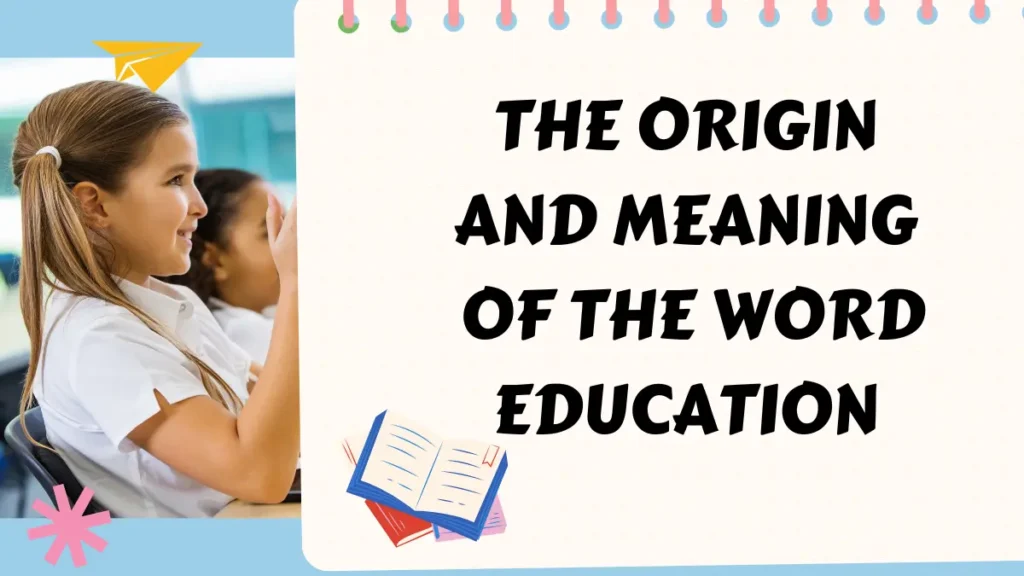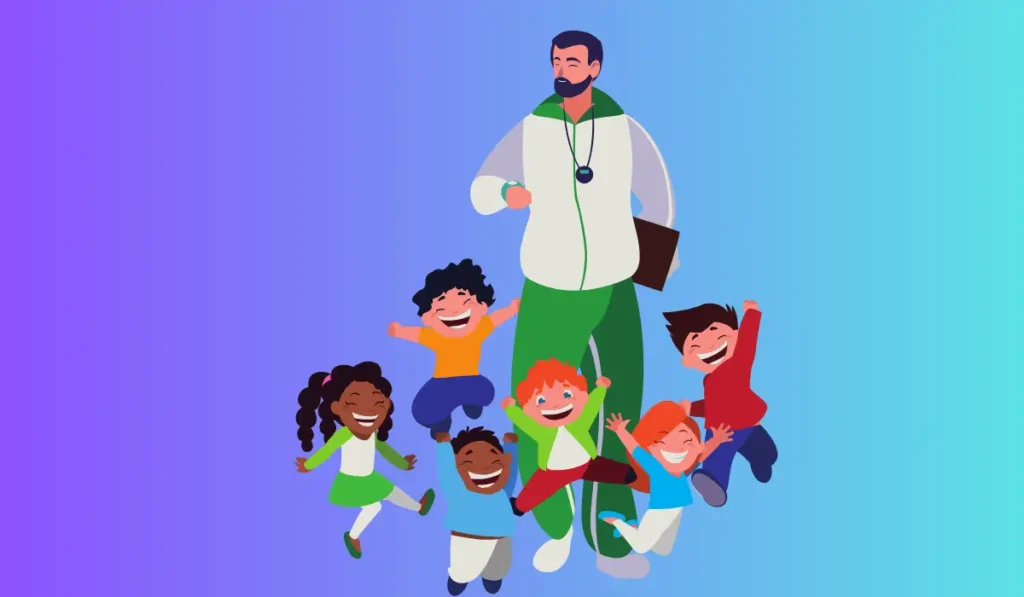Maxims of teaching consist of some principles for teachers to guide their teaching practice. The maxims stress the importance of motivating students, focusing on their needs and interests, making learning relevant and practical, and promoting active engagement and exploration.
The maxims outline the key principles that should guide a teacher’s practice, emphasizing the importance of engaging and motivating students, providing relevant and practical learning experiences, fostering exploration and curiosity, and ensuring that learning is tailored to the needs and interests of students.
In this article, we explore some maxims of teaching and examine how they can be applied in modern classroom settings.
Maxim 1: Learning and Memory
Memory is incredibly important when it comes to learning. After all, if you can’t remember anything you’ve learned, then what’s the point?
Understanding how memory works can help you improve your teaching strategies and ensure that your students are retaining the information you’re presenting to them.
Here are some key points to keep in mind:
- The brain has two types of memory: Short-term and long-term. Short-term memory only lasts about 30 seconds, while long-term memory can last for years (or even a lifetime!).
- Memories are formed when neurons in the brain communicate with each other and create new connections, called synapses.
- Different types of memories are stored in different areas of the brain. For example, memories related to language are stored in the left hemisphere, while memories related to spatial navigation are stored in the right hemisphere.
Strategies For Learning and Memory Retention
Now that you understand how memory works, let’s talk about some strategies for improving learning and memory retention. Here are some tips to keep in mind:
- Repeat, repeat, repeat. One of the most effective ways to solidify a memory is through repetition. Encourage students to review material multiple times over days or even weeks.
- Use visual aids. People tend to remember information better when it’s presented in a visual format. Consider using diagrams, images, or videos to help students remember key concepts.
- Make connections. Memories are often easier to recall when they’re connected to existing knowledge. Encourage students to think about how new information fits in with what they already know.
- Engage multiple senses. The more senses you can engage during the learning process, the more likely the information is to stick. Consider using hands-on activities, music, or even smells to help students remember important concepts.
By understanding how memory works and incorporating effective learning and memory retention strategies into your teaching, you can help your students remember more of what they learn and set them up for success in the future.
Maxim 2: Classroom Management
As an educator, you will need to develop quality classroom management skills to reduce the likelihood of discipline issues arising. Effective classroom management is essential for creating a safe and positive learning environment for your students.
Here are some strategies that will help you manage your classroom:
- Set clear expectations: Establish clear guidelines and expectations for your students to follow. This will allow them to know what is expected of them, making it easier to make the right choices.
- Praise positive behaviour: Reinforcing positive behaviour is a great way to create a positive classroom environment, build self-esteem and keep students motivated.
- Use non-verbal cues: Eye contact, gestures, and facial expressions can be a powerful tool in managing classroom behaviour. These cues will remind students of appropriate behaviour and help redirect unwanted behaviour.
- Be consistent: Consistency is key to effective classroom management. Ensure that you are consistent with expectations, consequences, and follow-through, reducing confusion and selective listening.
Strategies For Creating a Conducive Learning Environment
Creating a positive and conducive learning environment will enhance student achievement and engagement. Here are some strategies for creating such an environment:
- Setting the tone: Promote a positive attitude towards learning in your classroom by starting each session in an upbeat tone. Create a warm and welcoming environment where students feel comfortable to ask questions.
- Use positive language: Encourage a growth mindset by using positive language when addressing students. Focus on how students can improve by using words like “progress” or “improvement.”
- Make learning interactive: Engage students in class by making learning enjoyable and interactive. Incorporate learning games, debates, and group activities.
- Foster a sense of community: Create a sense of community in the classroom by encouraging students to work together and celebrate each other’s successes.
Effective classroom management and creating a conducive learning environment can be challenging, but it is essential to a student’s success.
Maxim 3: Differentiated Instruction
Differentiated instruction is a teaching approach that caters to the different learning abilities and needs of students. Teachers who employ this approach believe that every student learns differently and that a one-size-fits-all approach is ineffective.
The goal of differentiated instruction is to provide a learning experience that is personalized to individual students, making learning more efficient, engaging, and effective.

Strategies For Implementing Differentiated Instruction in The Classroom
Here are some effective strategies for implementing differentiated instruction in the classroom:
- Before starting a lesson, assess the student’s learning needs and abilities through pre-assessments, interest surveys, and learning style assessments.
- Plan lessons that are adaptable and adjustable to meet the different learning needs of the students.
- Provide multiple learning paths, such as different options for reading, writing, and projects.
- Use technology to differentiate instruction, for example, podcasts, videos, and interactive whiteboards.
- Group students based on their learning levels and abilities. Collaborative learning is effective as it enables students with different abilities to work together to achieve common goals.
- Provide opportunities for students to create, analyze and reflect on their learning. Do not put too much emphasis on the final product, but instead focus more on the learning process.
- Incorporate positive behaviour reinforcement in the classroom to encourage students to stay engaged in their learning.
By using differentiated instruction, teachers can make learning more effective for every student, no matter their ability level. Rather than focusing on one teaching method for all students, teachers can adapt their approaches to meet individual students’ needs.
Maxim 4: Assessment and Feedback
Assessment and feedback play a crucial role in the teaching process. It helps instructors to understand their student’s progress and performance while allowing students to gauge their learning journey. There are several reasons as to why assessment and feedback are essential:
- Allow the teacher to measure the student’s understanding of the course material.
- Provide students with a sense of accomplishment and motivation to continue their studies.
- Identify areas where the student may need additional support or guidance.
- Help students find their strengths and weaknesses and work on them accordingly.
- Create a healthy teacher-student communication channel.
Strategies For Effective Assessment and Feedback
Good quality assessment and feedback are significant in the context of learning. It is imperative to use appropriate strategies to provide useful feedback that enhances the student’s learning. Here are some effective strategies:
- Establish clear learning objectives and outcomes on the course syllabus, and assessment methods to achieve them.
- Use formative assessments such as quizzes, polls, and class participation regularly to monitor the student’s progress quickly.
- Use summative assessments such as tests, projects, and assignments to evaluate the student’s understanding of the course material comprehensively.
- Make the feedback a part of the learning process and provide it regularly to keep the students motivated.
- Use a grading rubric to provide specific and constructive feedback while assessing students’ work.
Assessment and feedback are essential in the teaching process and can improve student learning significantly. To be effective, instructors must use appropriate strategies to provide useful feedback that enhances the student’s learning journey.
Maxim 5: Teacher-Student Relationships
Teaching is the art of facilitating learning, and it requires unique skills that can only be honed over time. The process of imparting knowledge to students is not easy, and it can be overwhelming if educators do not have the right tools.
Importance Of Teacher-Student Relationship
One of the most important maxims in teaching is the emphasis on building and maintaining a strong teacher-student relationship. The teacher-student relationship is crucial because it has a direct impact on the student’s learning experience.
When students have a positive relationship with their teachers, they are more likely to engage in class, ask questions, and participate actively in classroom activities.
Here are some key points to consider:
- Teachers should create a welcoming and safe environment that fosters open communication between students and themselves.
- Teachers who demonstrate kindness, empathy, and respect for their students are more likely to earn their trust.
- Building rapport with students can help teachers understand their strengths and weaknesses, learning styles, goals, and challenges with greater accuracy.
- When teachers care about their students’ success and well-being, students are more likely to trust and respect them, leading to stronger emotional connections.
Strategies For Building Effective Teacher-Student Relationships
Building a strong teacher-student relationship requires deliberate and consistent effort. Here are some strategies teachers can employ to strengthen their relationships with students:
- Get to know your students personally. Learn about their interests, hobbies, goals, and challenges, both inside and outside the classroom.
- Practice active listening. Pay attention to what your students are saying, and show that you understand by providing feedback and asking follow-up questions.
- Treat your students with respect and kindness. Greet them with a smile and use positive reinforcement to encourage good behaviour.
Building a strong relationship with students is a crucial component of effective teaching.
Frequently Asked Questions
What Are Some Maxims of Teaching?
Maxims of teaching include ‘know thy learner’, ‘teach for understanding’, and ‘provide timely feedback’.
How Do Teachers Apply Maxims of Teaching?
Teachers apply maxims of teaching by knowing their learners, planning for understanding, and giving timely feedback.
Why Are Maxims of Teaching Important?
The maxims of teaching are important because they guide teachers to provide effective instruction, improve student learning, and promote student success.
Conclusion
As a teacher, it is important to understand and implement the core principles of teaching. The maxims of teaching guide us in facilitating the learning of our students effectively. We should always consider our students’ learning styles and interests to create an engaging classroom environment. By providing clear objectives and using varied teaching strategies, we can help our students attain their educational goals.
It is crucial to nurture positive relationships with our students and to create a safe learning atmosphere where everyone feels welcome. Consistent assessment and feedback are key to keeping our students on track and making necessary adjustments to our teaching methodologies.


